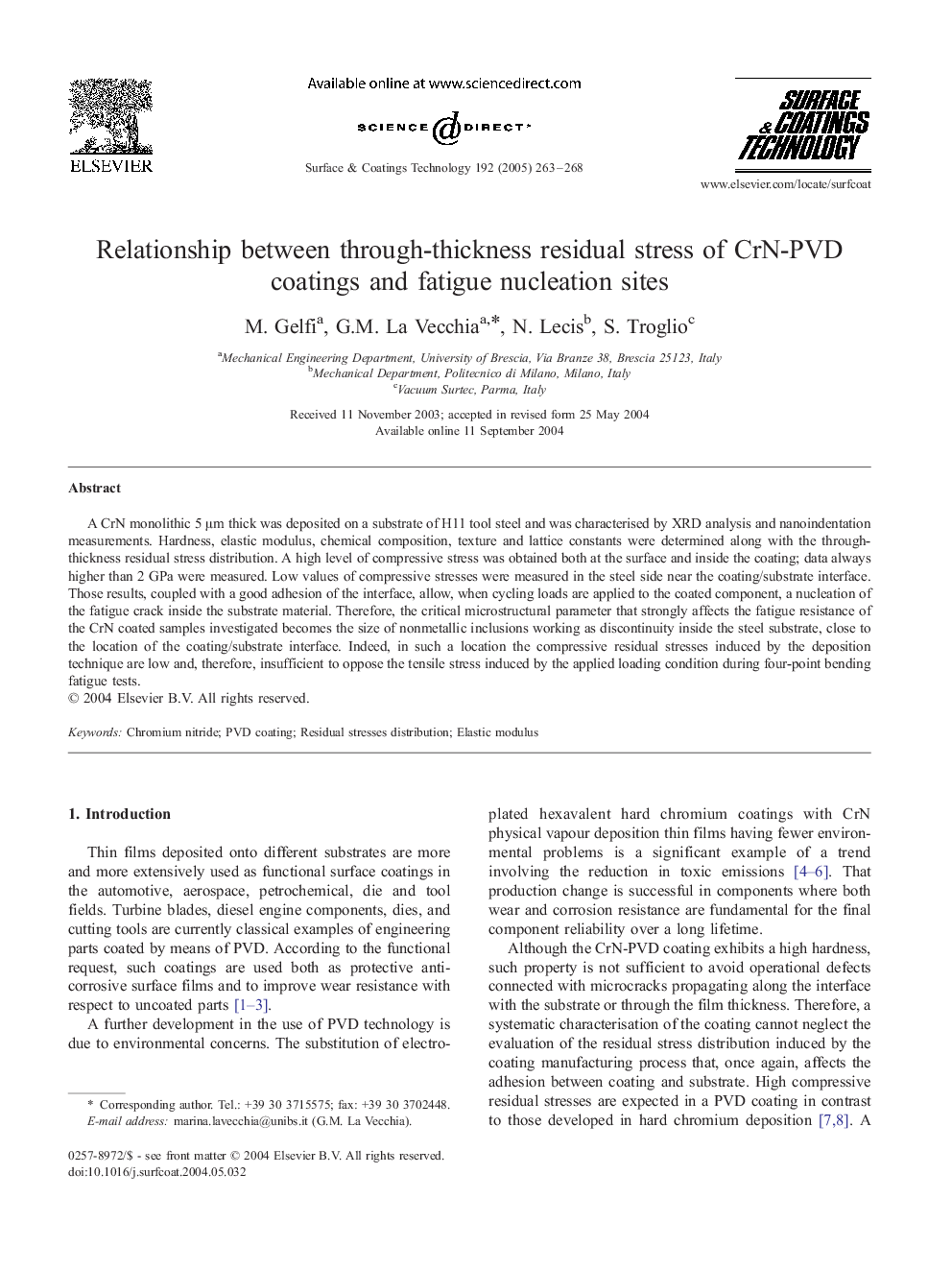| Article ID | Journal | Published Year | Pages | File Type |
|---|---|---|---|---|
| 9809887 | Surface and Coatings Technology | 2005 | 6 Pages |
Abstract
A CrN monolithic 5 μm thick was deposited on a substrate of H11 tool steel and was characterised by XRD analysis and nanoindentation measurements. Hardness, elastic modulus, chemical composition, texture and lattice constants were determined along with the through-thickness residual stress distribution. A high level of compressive stress was obtained both at the surface and inside the coating; data always higher than 2 GPa were measured. Low values of compressive stresses were measured in the steel side near the coating/substrate interface. Those results, coupled with a good adhesion of the interface, allow, when cycling loads are applied to the coated component, a nucleation of the fatigue crack inside the substrate material. Therefore, the critical microstructural parameter that strongly affects the fatigue resistance of the CrN coated samples investigated becomes the size of nonmetallic inclusions working as discontinuity inside the steel substrate, close to the location of the coating/substrate interface. Indeed, in such a location the compressive residual stresses induced by the deposition technique are low and, therefore, insufficient to oppose the tensile stress induced by the applied loading condition during four-point bending fatigue tests.
Related Topics
Physical Sciences and Engineering
Materials Science
Nanotechnology
Authors
M. Gelfi, G.M. La Vecchia, N. Lecis, S. Troglio,
